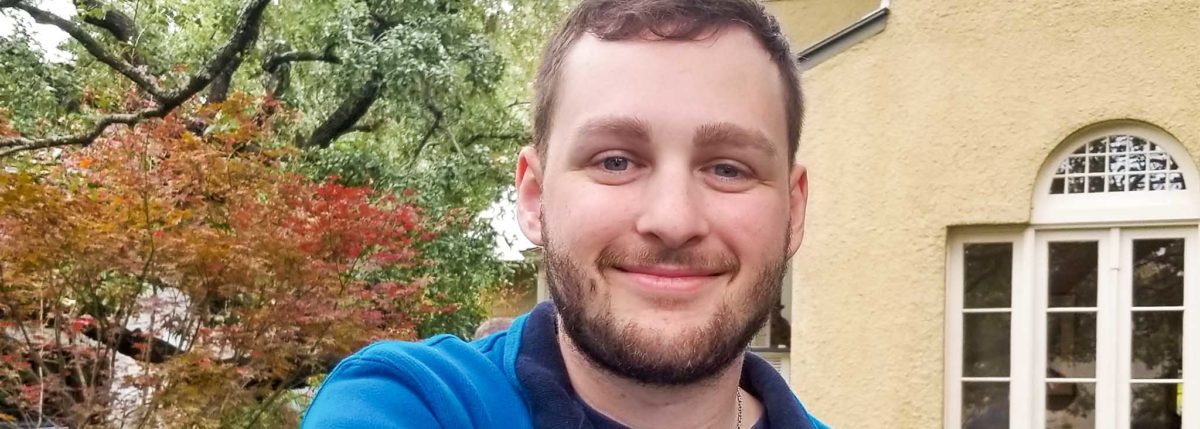My Son Was Diagnosed With T1D During The Last Pandemic
Editor’s Note: Get involved in Beyond Type 1’s #SeeTheSigns of diabetes campaign! Share your signs to help save lives, request #SeeTheSigns posters to share in your community, get sharable graphics for social media and more! Learn more here.

Tell-tale signs
There is never a good time to be diagnosed with type 1 diabetes, but especially not when the country is in the middle of a flu pandemic. In 2009, the U.S. was engulfed in a wave of a massive H1N1 strain of the flu, also referred to as the swine flu. The symptoms of type 1 diabetes can often mimic the flu, bringing on headaches, blurred vision and nausea in addition to frequent urination and excessive thirst, and we did not escape the flu diagnosis that September in 2009.
The first to go down in our house was our 9-year-old daughter. Within a few days, our 12-year-old son Tristan followed with a flu diagnosis. At the time that he was diagnosed, the pediatrician’s office was not even bothering to test patients anymore. We will never know if this swine flu triggered our son’s diabetes but what we do know is that once he was diagnosed, he struggled to recover. While his sister was up and running quickly, bouncing around, Tristan was continuing to experience headaches, extreme lethargy and excessive weight loss. Over the next month, he continued to run five miles every morning for his school’s cross-country team. It was the first time he had participated in the sport, so we assumed his weight loss could be attributed to the increased exercise.
Over the next month, he would come home from school and complain about extreme hunger yet refuse to eat because of his nausea—he lost 20 pounds in four weeks. Now that we understand diabetes, we can see that he was experiencing weight loss due to lack of insulin. The irony was that since he was running 5 miles every morning before school, the activity would bring his blood sugar levels back down.
Hiding in plain sight
The swine flu was dominating headlines and our pediatrician’s office, but I felt so strongly something serious was wrong, I requested the last appointment on a Friday afternoon. Type 1 diabetes was not on my radar at all despite having a sister-in-law with type 1 diabetes (T1D). I wish our pediatrician’s office had posted the signs of type 1 diabetes in their office. Had they done so, it might have prompted my preteen son to mention an important detail to the doctor—that he had been urinating excessively.
We appreciated our pediatrician’s concern and he ordered numerous tests. Unfortunately, these would require that Tristan be fasting, so we agreed to return first thing Monday morning for the bloodwork. Which was incredibly lucky. Yes, we feel incredibly lucky because that Sunday night was Halloween—full of trick or treating and of course, lots of candy. Instead of indulging on his candy, Tristan chose to wait to eat his candy when he planned to get his braces off on Tuesday. Diabetes, diabetic ketoacidosis (DKA) and candy without a working pancreas could have been deadly for our son. While we awaited test results, I took Tristan to get his braces off and then took him to school on Tuesday morning.
As a mom, I knew something was seriously wrong with my son. His sudden moodiness and refusing to eat made me think he had an eating disorder. I was literally on the phone arranging mental health care for him when the pediatrician called on my cell phone to tell me he had type 1 diabetes. Suddenly it all made sense. I was familiar with the signs of diabetes but unfortunately my son was not. I feel very strongly in the importance of a Warning Signs campaign because people of all ages can be diagnosed with T1D. I wish my preteen son had known to share all his symptoms with me sooner because undiagnosed T1D is incredibly dangerous and can be deadly.
Raising awareness
When Tristan went to college at Texas Tech University, we introduced the Beyond Type 1 Diabetes Awareness campaign to all five of their campuses. As an Academic Advisor at a local community college, I also have the warning signs of diabetes and DKA visible in my office. Sadly, we continue to have both adults and children misdiagnosed. Awareness can make sure the right information can be communicated with doctors from their patients.
We feel incredibly lucky that our son lived through a flu pandemic and his type 1 diabetes diagnosis. Each year we have a flu season and the signs of type 1 diabetes can easily be lost within the chaos—we can’t take that chance any longer. Our family continues to educate others regarding the signs of type 1 diabetes because you never know when a life may be saved by a quick and correct diagnosis.





